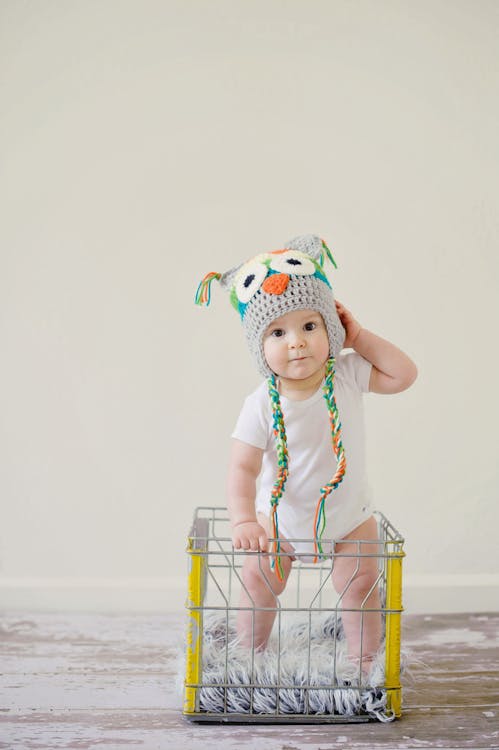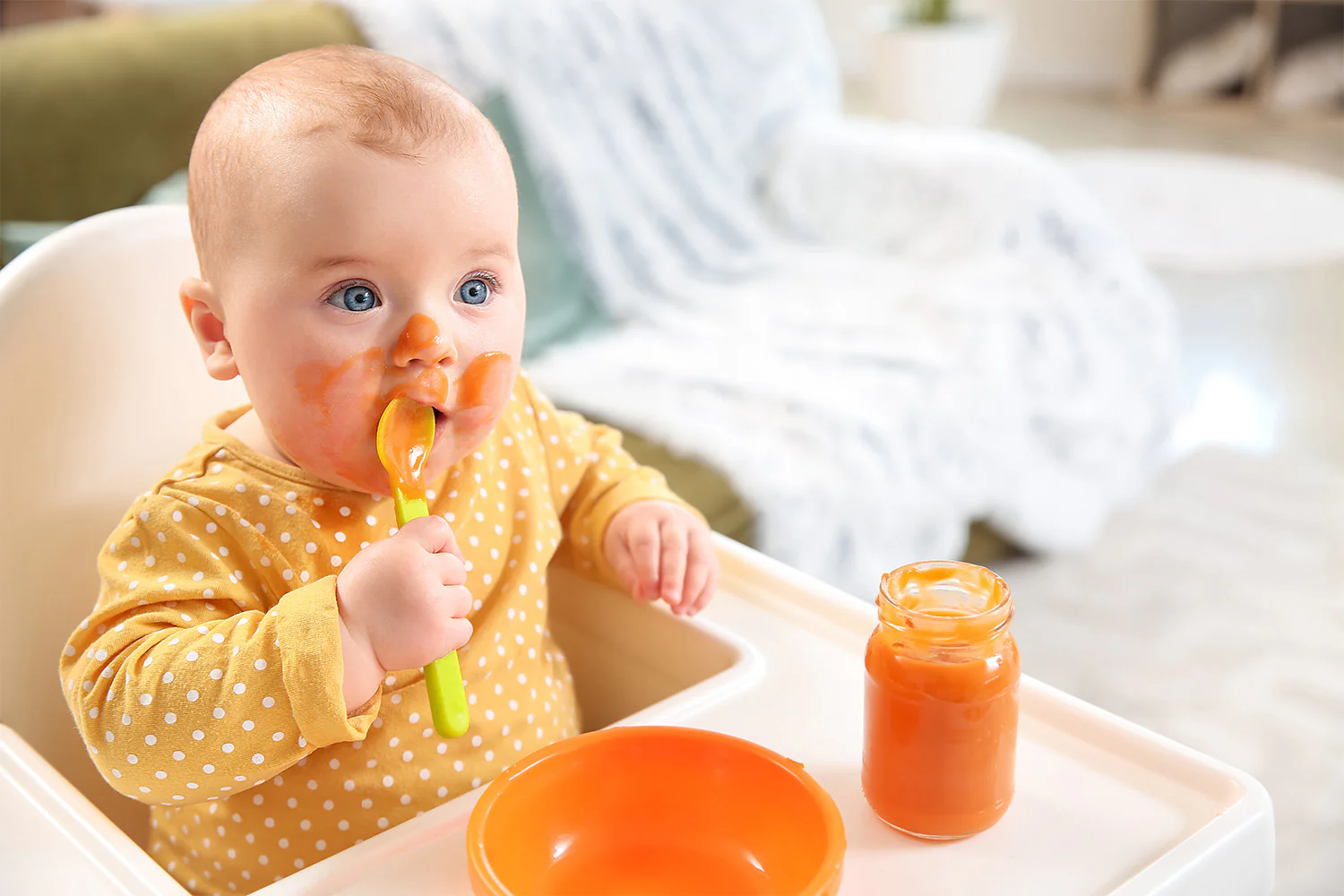Table of Contents
- Why Bother Tracking Newborn Milestones? More Than Just Bragging Rights!
- The Amazing First Year: A Whirlwind Tour of Baby Milestones (0-12 Months)
- Beyond the Checklist: Key Areas of Infant Development
- Embracing the Journey: When to Relax and When to Seek Advice
- Practical Tips for Nurturing Your Baby’s Development
- Conclusion: Cherishing the Milestone Moments
Your Little One’s Big Journey: Tracking Newborn Milestones Month by Month
Bringing a newborn home is like opening the most intricate, wonderful, and slightly overwhelming gift you’ve ever received. Those tiny fingers, sleepy yawns, and sudden cries fill your world with a whirlwind of love, exhaustion, and constant learning. Amidst the diaper changes and feeding schedules, you’ll witness something truly magical: your baby’s incredible journey of growth and development. This journey is marked by newborn milestones – those exciting firsts that signal your little one is learning, adapting, and mastering new skills.
But what exactly are these milestones? How do you track them? And what do they tell you about your baby’s progress? If you’re feeling a mix of excitement and slight anxiety about baby development, you’re not alone! It’s completely normal for new parents to wonder if their baby is hitting their marks.
This guide is here to be your friendly companion through that incredible first year. We’ll explore the fascinating world of infant development, break down key milestones month by month, offer practical tips to support your baby’s growth, and help you understand when to relax and when it might be wise to check in with your pediatrician. Remember, every baby is unique and develops at their own pace. Think of milestones not as a rigid checklist, but as a beautiful roadmap celebrating your baby’s individual journey. Let’s embark on this adventure together!
Why Bother Tracking Newborn Milestones? More Than Just Bragging Rights!
You might wonder, “Isn’t my baby just going to grow naturally? Why add ‘milestone tracker’ to my already long list of parental duties?” While it’s true that development unfolds organically, paying gentle attention to milestones offers significant benefits:
- Understanding Typical Development: Tracking provides a general framework for what skills babies typically acquire around certain ages. This helps you appreciate the sequence of development – how learning to lift their head paves the way for rolling over, which leads to sitting, crawling, and eventually walking.
- Early Identification of Potential Concerns: While variations are normal, consistently missing milestones or losing skills previously acquired can sometimes signal underlying developmental delays or health issues. Observing your baby closely allows for early intervention if needed, which can make a huge difference. Knowing the typical progression helps you spot potential developmental red flags.
- Celebrating Every Tiny Triumph: Let’s be honest, parenting is hard work! Tracking milestones gives you concrete moments to celebrate. That first real smile? The day they finally grasp that toy? These aren’t just developmental markers; they’re moments of pure joy and connection that deserve recognition.
- Enhancing Bonding: Actively engaging with your baby to encourage milestones – through play, talk, and tummy time – strengthens your bond. It’s a way of communicating, learning about your baby’s preferences, and showing them they are loved and supported.
- Informing Pediatrician Visits: Your observations are invaluable information for your pediatrician. During well-child checkups, doctors rely on parental reports alongside their own assessments. Having specific examples of what your baby is (or isn’t yet) doing helps paint a clearer picture of their overall child development.
Tracking isn’t about comparison or pressure; it’s about awareness, celebration, and providing informed care for your little one.
The Amazing First Year: A Whirlwind Tour of Baby Milestones (0-12 Months)
The first year of life is arguably the period of most rapid development a human ever experiences. From a tiny, dependent newborn to a babbling, potentially walking toddler-in-training, the transformation is astounding. Let’s break down some key milestones you might observe, keeping in mind these are averages – your baby’s timeline will be their own!
Month 1: The Fourth Trimester – Adjusting to the World
Your baby is transitioning from the womb to the outside world. Much of their behavior is driven by reflexes.

- Reflexes Reign: You’ll see the rooting reflex (turning head towards touch on the cheek), sucking reflex, startle (Moro) reflex, and grasping reflex.
- Limited Vision: Focus is best at 8-12 inches – roughly the distance to your face during feeding. They’re drawn to faces and high-contrast patterns (like black and white).
- Sound Recognition: Prefers human voices, especially yours! May startle at loud noises.
- Motor Skills: Movements are jerky. They have little head control (head lag when pulled to sit) but may briefly lift their head during tummy time. Keeps hands in tight fists.
- Communication: Crying is their primary way to communicate needs (hunger, discomfort, tiredness).
Practical Tip: Start supervised tummy time early, even just for a minute or two, several times a day. Talk, sing, and make eye contact during feeding and changing times.
Month 2: Becoming More Aware and Social
Your baby starts to ‘wake up’ to the world a bit more.
- The Social Smile: That first *real* smile (not just gas!) directed at you is a heart-melter. This marks a huge leap in social emotional development.
- Vocalization Begins: Starts making cooing and gurgling sounds – their first steps in language development.
- Improved Vision: Can track moving objects more smoothly with their eyes. Recognizes familiar faces at a distance.
- Motor Skills: Movements become slightly smoother. Can hold their head up briefly (maybe 45 degrees) during tummy time. May bring hands towards their mouth or midline.
- Self-Soothing: Might start sucking on fingers or a fist to calm down.
Practical Tip: Respond enthusiastically to their coos and smiles! Continue tummy time, placing interesting objects nearby for them to look at. Engage in ‘conversations’ by mimicking their sounds.
Month 3: Gaining Control and Curiosity
Your baby is becoming more interactive and gaining physical control.
- Head Control Improves: Less head lag when pulled to sit. Can hold head steady when held upright. Can lift head and chest higher (pushing up on forearms) during tummy time.
- Hand Discovery: Fascinated by their own hands. Brings hands together, swats at dangling objects (though aiming is off!). May briefly hold a rattle placed in their hand.
- Increased Social Interaction: Enjoys interacting with people, smiles readily, and might chuckle. Follows moving objects more consistently.
- Recognizing Routines: May start anticipating regular events, like feeding time.
Practical Tip: Introduce a baby gym or play mat with dangling toys they can bat at. Continue talking, reading, and singing – they’re absorbing language even now. Offer safe, graspable toys.

Months 4-6: Exploration Central – Rolling, Reaching, Babbling
This period sees significant leaps in motor skills and communication.
- Motor Milestones: Rolling over (often tummy-to-back first, then back-to-tummy). Pushes up on straight arms during tummy time. May start sitting with support (propped up). Bears weight on legs when held standing.
- Fine Motor Skills: Reaches for objects purposefully with both hands (using a ‘raking’ grasp). Brings objects to their mouth (everything goes in the mouth!). Transfers objects from one hand to the other.
- Language Development: Babbling begins! You’ll hear consonant sounds like ‘baba,’ ‘mama,’ ‘dada’ (though not yet specific to parents). Laughs out loud. Responds to their name.
- Cognitive Growth: Shows curiosity about objects and tries to reach for things out of reach. Explores toys with hands and mouth.
Practical Tip: Ensure a safe floor space for rolling and exploring. Provide a variety of safe objects with different textures for them to grasp and mouth. Get down on the floor and play! Start introducing solid foods around 6 months (as advised by your pediatrician).
Months 7-9: Getting Mobile and Understanding More
Prepare for movement! Your baby is learning to navigate their world.

- Gross Motor Skills: Sits independently without support. May start crawling, creeping, scooting, or pulling themselves forward on their belly. Might begin pulling up to a stand using furniture.
- Fine Motor Skills: Developing the pincer grasp (using thumb and forefinger to pick up small items). Bangs objects together. Feeds self finger foods (like dissolvable puffs).
- Cognitive Leaps: Understands object permanence better (knows an object still exists even when hidden – hello, peek-a-boo!). Finds partially hidden objects. Responds to simple instructions like “come here.” Understands the word “no.”
- Social and Emotional: May show stranger anxiety or clinginess to primary caregivers (a normal sign of healthy attachment). Enjoys interactive games like peek-a-boo and pat-a-cake.
- Language: Babbles with more complex combinations of sounds (variegated babbling). Imitates sounds.
Practical Tip: Baby-proof your home thoroughly now that they’re potentially mobile! Encourage safe exploration. Play hiding games with toys. Continue reading books and naming objects.
Months 10-12: On the Verge of Toddlerhood
The transition towards walking and talking is in full swing.
- Mobility Mastered (Almost!): Pulls to stand easily. Cruises (walks while holding onto furniture). May stand alone momentarily. Some babies take their first independent steps during this time (though many walk later, which is perfectly normal!).
- Fine Motor Refinement: Masters the pincer grasp. Pokes with index finger. Puts objects into containers and takes them out. Tries to use a spoon (messily!). Helps with dressing by extending arms or legs.
- Communication Explosion: Says “mama” and “dada” (often now specifically referring to parents). Imitates gestures like waving bye-bye or clapping. Understands and responds to more simple commands. May say one or two other recognizable words. Points to objects they want.
- Cognitive Understanding: Explores objects in new ways (shaking, banging, throwing). Imitates actions (like pretending to talk on a phone). Shows interest in picture books.
- Social Skills: Shows definite preferences for certain people and toys. May show fear in some situations. Enjoys an audience and repeating actions that get laughs.
Practical Tip: Create a safe space for cruising and potential first steps. Offer push toys. Read books daily, pointing to pictures and naming things. Encourage imitation. Celebrate their efforts and growing independence!

Beyond the Checklist: Key Areas of Infant Development
While month-by-month guides are helpful, development isn’t strictly linear. It’s useful to understand the broader categories of skills your baby is developing.
Motor Skills (Gross and Fine)
Gross motor skills involve the large muscles used for moving – think head control, rolling, sitting, crawling, standing, and walking. Fine motor skills involve the smaller muscles, particularly in the hands and fingers – like grasping, reaching, transferring objects, and eventually, the pincer grasp needed for self-feeding and manipulating small items. Tummy time is crucial for building the neck, shoulder, and core strength needed for many gross motor milestones.
Cognitive Development
This refers to how your baby learns, thinks, solves problems, and remembers. Early cognitive milestones include recognizing familiar faces, understanding object permanence (that things exist even when out of sight), exploring cause and effect (shaking a rattle makes noise), imitating actions, and beginning to understand language.
Language and Communication
From the first cries, your baby is communicating. This progresses to coos, babbles, understanding familiar words and simple instructions, imitating sounds and gestures (like waving), and eventually saying those magical first words like “mama” or “dada.” Responding to your baby’s attempts to communicate is vital for language acquisition.
Social and Emotional Growth
This involves forming attachments, expressing emotions, interacting with others, and developing a sense of self. Key milestones include the social smile, recognizing caregivers, showing enjoyment during play, developing stranger anxiety or separation anxiety (normal signs of attachment), and imitating social gestures.
Embracing the Journey: When to Relax and When to Seek Advice
It’s crucial to reiterate: every baby develops at their own pace. The ranges for achieving milestones can be quite broad. Your friend’s baby might walk at 10 months, while yours takes their first steps at 14 months – both are perfectly normal!
Focus on your baby’s overall progress and joy rather than comparing them rigidly to a baby milestones chart. However, parental intuition is powerful. If you have persistent concerns about your baby’s development, it’s always best to talk to your pediatrician or a child development specialist.
Potential Red Flags (Consult Your Doctor If You Notice):
- Significant lack of response to sounds or visual stimuli.
- Doesn’t smile by 3 months.
- Doesn’t coo or make sounds by 4 months.
- Doesn’t bring hands to mouth by 4 months.
- Doesn’t reach for objects by 6 months.
- Doesn’t roll over in either direction by 6 months.
- Seems very stiff or very floppy (poor muscle tone).
- Doesn’t bear some weight on legs when supported by 7-8 months.
- Doesn’t sit with help by 9 months.
- Doesn’t babble (‘mama’, ‘baba’, ‘dada’) by 12 months.
- Doesn’t respond to their name by 12 months.
- Doesn’t point to objects or pictures by 12-15 months.
- Loss of skills previously mastered (regression).
This list isn’t exhaustive, and one sign alone doesn’t necessarily mean there’s a problem. But these are points worth discussing with a healthcare professional. Regular well-child checkups are essential opportunities to monitor infant growth and development and address any concerns.
Practical Tips for Nurturing Your Baby’s Development
You don’t need fancy gadgets or intensive programs to support your baby’s growth. The most powerful tools are often the simplest: your time, attention, and love.
- Talk, Sing, and Read: Narrate your day, sing silly songs, read colorful board books. Even newborns benefit from hearing language. Your voice is soothing and stimulating.
- Prioritize Tummy Time: Start early with short, supervised sessions on a firm surface. Make it fun with toys or by getting down face-to-face with your baby. This builds crucial strength for motor milestones.
- Engage Through Play: Offer age-appropriate toys, but remember *you* are their favorite plaything! Play peek-a-boo, clap hands, make funny faces. Simple interaction is key.
- Provide Safe Exploration: As your baby becomes mobile, ensure their environment is safe for them to move, explore, touch, and (inevitably) mouth objects.
- Respond to Cues: Learn your baby’s different cries and signals. Responding promptly to their needs builds trust and security, crucial for emotional development.
- Establish Routines: Predictable routines for feeding, playing, and sleeping can help your baby feel secure and understand the rhythm of the day.
- Be Patient and Celebrate: Development isn’t a race. Celebrate every effort and milestone, big or small. Your encouragement fuels their confidence.
- Take Care of Yourself: Parenting is demanding. Getting enough rest (whenever possible!), eating well, and seeking support allows you to be the present, responsive parent your baby needs.
Conclusion: Cherishing the Milestone Moments
Tracking newborn milestones throughout the first year isn’t just about ticking boxes; it’s about witnessing and celebrating the incredible, rapid-fire journey of baby development. From those first reflexive movements to intentional steps and words, each phase brings new wonders and achievements.
By understanding the general sequence of infant development, engaging with your baby through play and interaction, and creating a safe, stimulating environment, you provide the perfect foundation for them to thrive. Remember to observe, engage, and celebrate, but also to trust your instincts. Don’t hesitate to consult your pediatrician with any questions or concerns about your baby’s unique path.
Most importantly, amidst the tracking and the ‘shoulds,’ take time to simply *be* with your baby. Soak in the cuddles, cherish the giggles, and marvel at the tiny human discovering the world before your eyes. This first year flies by – enjoy the incredible, exhausting, beautiful ride!










